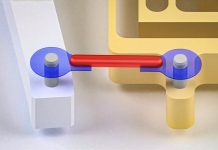
Wearable health trackers are becoming more popular every day, but imagine one that can tell you much more about your health just by analyzing your sweat. Sounds exciting, right?
This is exactly what a team of scientists led by Wei Gao at the Heritage Medical Research Institute is working on.
Over the past five years, Gao has been creating wearable sensors that can analyze your sweat and tell you about various things going on in your body.
These devices can read levels of different substances in your sweat, including salts, sugars, amino acids, and vitamins, and even complex molecules that can help spot health risks early on.
Recently, Gao teamed up with Martin Kaltenbrunner’s group at Johannes Kepler University Linz in Austria to add a new feature to these wearable sensors: a solar cell.
Solar cells turn sunlight into electricity, and the one used in this wearable is made of a crystal material called perovskite.
Perovskite crystals are a game-changer for several reasons.
Firstly, they’re cheaper and easier to manufacture than silicon, which is traditionally used in solar cells.
Secondly, they’re much thinner, making them more suitable for wearable devices. Thirdly, they can work under different types of light, from sunlight to indoor lighting.
Lastly, perovskite solar cells can convert more sunlight into electricity than silicon cells. In fact, the flexible perovskite solar cell (FPSC) used in Gao’s wearable sweat sensor broke records with an efficiency of over 31% under indoor light!
Gao explains that the FPSC makes their sweat sensor well-suited to real-life conditions. “We don’t want to only use strong sunlight to power our wearables,” he says.
“We care about more real-life conditions, including normal office and home lighting.”
Previous versions of these sensors relied on bulky batteries or required a lot of effort from the wearer.
The new FPSC-powered sensor is much more practical, allowing continuous monitoring of various things like pH, salt, glucose, and temperature, and even the rate of sweating, all without needing batteries or special lighting.
This solar-powered sweat sensor is designed like origami, with each layer having a different job. It manages power, stimulates sweat production, measures various substances in the sweat, and processes data, which it sends to a mobile app for easy reading.
And the best part? Most parts of the sweat sensor, including the electronics and the solar cell, can be reused.
Only the sensor patch, which measures the substances in the sweat, is disposable and can be made cheaply with inkjet printing. These patches can even be customized to measure specific substances based on the user’s needs.
These new wearable sensors have the potential to do a lot more than current health trackers. They could help manage conditions like diabetes and detect diseases like heart disease, cystic fibrosis, and gout.
They’re also noninvasive and can provide frequent measurements, giving a more accurate picture of a person’s health over time. Plus, they’re relatively inexpensive, which means they could be used worldwide, including in developing countries.
This groundbreaking research has been published in the journal Nature Electronics, and we can’t wait to see what comes next in this exciting field of health technology!
Follow us on Twitter for more articles about this topic.



